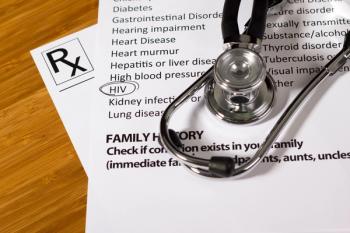
Early Signs and Symptoms of Shingles
Quick intervention can reduce duration and severity of shingles.
Shingles (herpes zoster) is a viral infection most often associated with and diagnosed by the appearance of a red, blistering rash that typically appears as a band along 1 side of the torso. Like many illnesses, however, there are precursor signs and symptoms that if recognized and treated early can lead to a shorter course of infection, less discomfort, and fewer complications.
The varicella zoster virus (VZV) that causes shingles is the same virus that causes chickenpox and then lays inactive in the body for years or decades before reactivating. When it does, the first pre-rash sign of shingles is typically
Other early symptoms include hypersensitivity to touch and itching. Additionally, patients may complain of fatigue, muscle ache, nausea, chills, headaches, fever, and a general overall feeling of unwellness.
Within a few days, a red rash of fluid-filled blisters erupts. Over the course of a week to 10 days, the blisters break open, ooze clear fluid containing the VZV, and then crust over. This is considered the active phase of the infection when the virus can be transmitted to others, specifically individuals who have never had chickenpox or been vaccinated against it. The blisters gradually grow smaller and scab over before disappearing 2 to 4 weeks after they first appeared.
It is important to note that in some rare cases people with shingles do not experience a visible rash. This is known as
Early intervention in treating shingles can help reduce the severity of the illness and the risk of complications. Antiviral medicines like acyclovir (Zovirax), valacyclovir (Valtrex), or famciclovir (Famvir) are generally prescribed and are most effective when taken as soon as possible after the rash appears.
OTC and prescription pain medications may help reduce physical discomfort of shingles. Calamine lotion, wet compresses, and oatmeal baths are popular options for dealing with itching.
If a patient does not experience any complications from shingles, including postherpetic neuralgia (
When it comes to shingles, prevention by
The highly-effective Shingrix (RZV) vaccine is recommended by the CDC and is available for healthy adults aged 50 years and older. Administered in 2 doses given 2 to 6 months apart, Shingrix protects against both shingles and PHN.1
The alternative - Zostavax (ZVL) - may be given to individuals aged 60 and older if Shingrix is not available, if they are allergic to Shingrix, or if they prefer Zostavax over Shingrix. Although neither vaccine guarantees that the recipient won't get shingles, they do reduce the duration, severity, and potential complications of the illness.1
References:
- National Center for Immunization and Respiratory Diseases. What Everyone Should Know About Shingles Vaccines. CDC. May 31, 2018. https://www.cdc.gov/vaccines/vpd/shingles/public/index.html.
Newsletter
Pharmacy practice is always changing. Stay ahead of the curve with the Drug Topics newsletter and get the latest drug information, industry trends, and patient care tips.















































































































